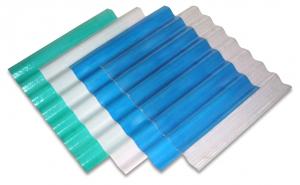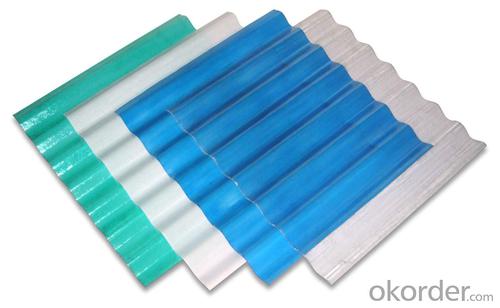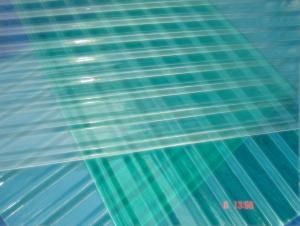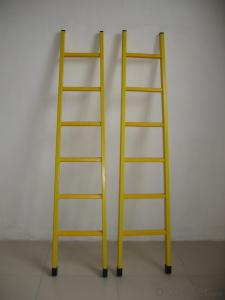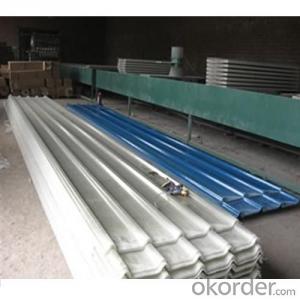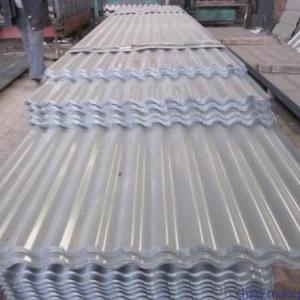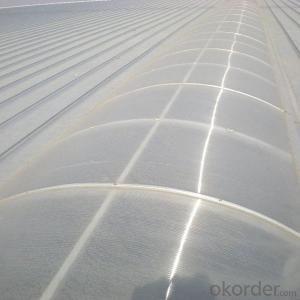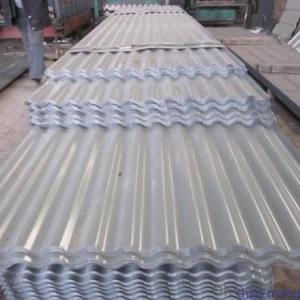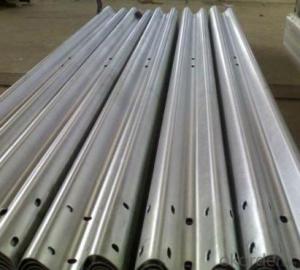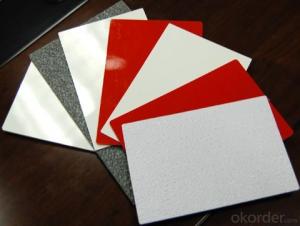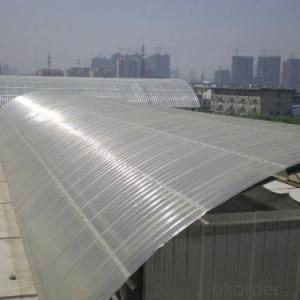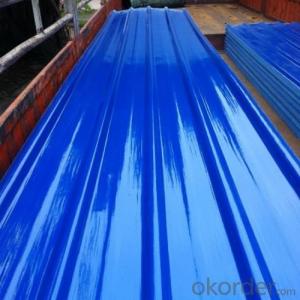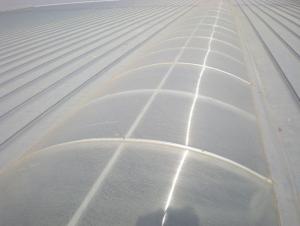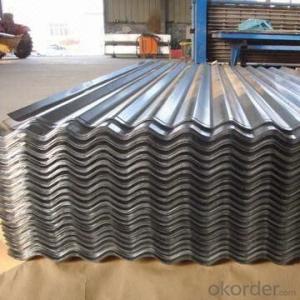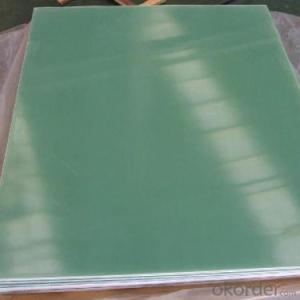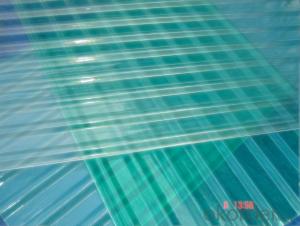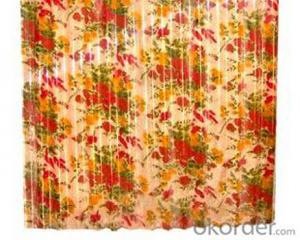FRP GRP Roofing Panel
- Loading Port:
- China Main Port
- Payment Terms:
- TT or L/C
- Min Order Qty:
- 100m2 watt
- Supply Capability:
- 1000m2/MONTH watt/month
OKorder Service Pledge
Quality Product, Order Online Tracking, Timely Delivery
OKorder Financial Service
Credit Rating, Credit Services, Credit Purchasing
You Might Also Like
Characteristics of GRP Roofing Panel:
1) Transparant;
2) Lasting Performance
3)High Strength & light weight
4) Thermal Insulation
5) Corrosion Resistant
Properties of GRP Roofing Panel:
- High light transmittance, with a higher index of transmitting than ordinary FRP sheet, the color free sheet can reach the transmitting index above 85%;
- Soft sunlight shooting in house without the existence of light drizzling since the fiberglass is well distributed in the sheet;
- Low ultra-violet transmission, which can reduce the harm for the plants and is very useful for the green house skylight;
- Good weather resistance, with the special coat covered on the surface of the skylight sheet, and a working life of over 15years is available;
- Strong strength and strong impact resistance, being resistant for hail without the effect on the normal use the sheet;
- Low thermal conductivity, with the heat loss 34-48% lower than that of single glass of the single plastics film, showing much better thermal insulation effect than glass and plastics, and at present double skylight sheet has been developed and applied for the severe cold area to meet the requirement for the thermal insulation, its index of light transmission can also reach above 75%;
Applications of GRP Roofing Panel:
- Match with the asbestos-cement corrugated sheet and the galvanized steel corrugated sheet, which is generally used;
- Mach with the roller-pressing steel sheet;
- Mach with concealed roller-pressing steel sheet as skylight sheet;
- Mach with thermal insulation roller-pressing steel sheet as skylight sheet.
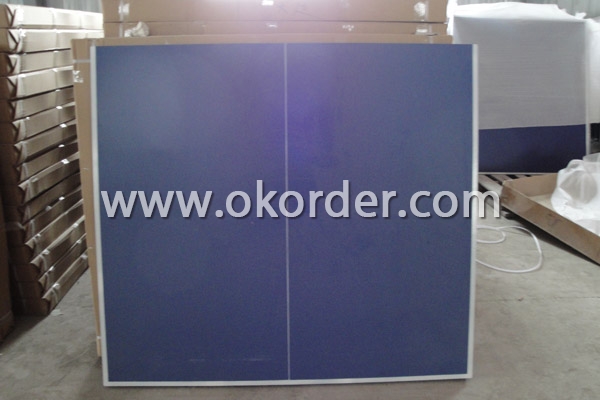
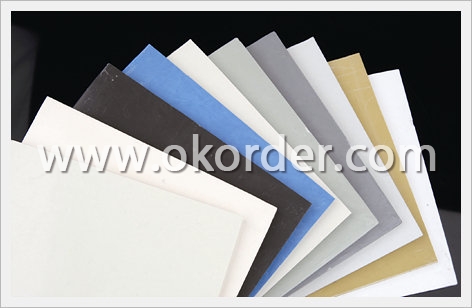
- Q: Are FRP roofing panels suitable for use in agricultural buildings?
- Yes, FRP (Fiberglass Reinforced Plastic) roofing panels are highly suitable for use in agricultural buildings. FRP panels offer a range of benefits that make them ideal for such applications. Firstly, FRP roofing panels are highly durable and long-lasting. They are resistant to impact, weathering, and corrosion, which is extremely beneficial in agricultural buildings where exposure to harsh environmental conditions is common. This durability ensures that the panels can withstand the demands of agricultural operations and maintain their structural integrity for an extended period. Secondly, FRP panels are lightweight yet strong. This makes them easy to install and reduces the need for additional structural support, saving time and costs during construction. The lightweight nature of FRP panels also allows for easier handling and transportation, making them a practical choice for agricultural buildings. Additionally, FRP panels offer excellent insulation properties. They provide thermal insulation, helping to regulate temperature and reduce energy consumption within the agricultural building. This is particularly advantageous for buildings that require a controlled environment, such as livestock housing or storage facilities. Furthermore, FRP roofing panels are non-porous, which means they are resistant to mold, mildew, and bacterial growth. This is crucial for agricultural buildings where hygiene and cleanliness are essential, ensuring a healthy environment for both animals and produce. Lastly, FRP panels are available in a variety of colors, allowing for customization and aesthetic appeal. This can be important for agricultural buildings that are visible to the public or need to blend in with the surrounding landscape. In conclusion, FRP roofing panels are highly suitable for use in agricultural buildings due to their durability, lightweight nature, insulation properties, resistance to mold and bacteria, and aesthetic options. These panels provide a reliable and cost-effective solution for agricultural structures, ensuring a long-lasting and efficient building envelope.
- Q: Can FRP roofing panels be cut to fit specific dimensions?
- Yes, FRP roofing panels can be cut to fit specific dimensions.
- Q: Can FRP roofing panels be used in areas with high levels of industrial emissions?
- FRP roofing panels are generally suitable for use in areas with high levels of industrial emissions. These panels are renowned for their durability and resistance to various chemicals, making them well-suited for harsh environments, including those with industrial emissions. However, it is crucial to take into account the specific type and concentration of industrial emissions in the area. Certain emissions, such as acidic gases or corrosive particles, may necessitate additional protective coatings or special formulations of FRP to ensure long-lasting performance. Consulting with FRP manufacturers or technical experts is also advisable. They can provide tailored guidance based on the nature of the industrial emissions and the intended use of the FRP roofing panels. Furthermore, regular maintenance and inspections should be carried out to evaluate any potential degradation or damage caused by the industrial emissions, ensuring the continuous effectiveness of the FRP roofing system.
- Q: Are FRP roofing panels resistant to wind damage?
- FRP (Fiberglass Reinforced Plastic) roofing panels possess a general resistance to wind damage. Their durability and strength are well-known, enabling them to withstand strong winds. The inclusion of fiberglass reinforcement in these panels provides them with strength and flexibility, ensuring they can withstand the forces of strong winds without bending or breaking. Moreover, FRP roofing panels are typically equipped with secure fastening systems that further enhance their resistance to wind damage. However, it is important to acknowledge that the extent of their resistance to wind damage can vary depending on factors such as the method of installation, the thickness of the panels, and the specific wind conditions in a given area. Hence, it is always advisable to seek guidance from a professional installer or manufacturer regarding the wind resistance capabilities of FRP roofing panels for a specific project.
- Q: Are FRP roofing panels suitable for sports facilities?
- Sports facilities can benefit from the use of FRP (Fiberglass Reinforced Plastic) roofing panels. These panels possess various advantages that make them an excellent option for such venues. To begin with, FRP roofing panels are both lightweight and strong, making them perfect for the expansive roofs typically found in sports facilities. Their lightness also reduces the overall burden on the building structure. Additionally, FRP roofing panels are highly durable and resistant to weathering, UV radiation, and corrosion. This makes them well-suited for outdoor sports facilities that are constantly exposed to different weather conditions. Furthermore, FRP panels have a long lifespan, resulting in minimal maintenance and replacement costs over time. Moreover, these panels offer exceptional light transmission, enabling natural light to illuminate the sports facility. This creates a bright and well-lit environment for athletes and spectators, ultimately enhancing the overall experience. Furthermore, FRP roofing panels come in a variety of colors and finishes, allowing for customization to match the aesthetic requirements of the sports facility. They are also easy to install and comparatively cost-effective compared to other roofing materials. In conclusion, FRP roofing panels are an appropriate choice for sports facilities due to their lightweight nature, durability, resistance to weather, ability to transmit light, customization options, and cost-effectiveness.
- Q: Are FRP roofing panels suitable for extreme weather conditions?
- FRP roofing panels are well-suited for extreme weather conditions. FRP, which stands for Fiber Reinforced Plastic, is a robust and resilient material that can endure a variety of weather conditions, including extreme heat, cold, wind, rain, and even hail. One of the main benefits of FRP roofing panels is their high strength-to-weight ratio, allowing them to withstand heavy wind loads and prevent damage from powerful gusts. Moreover, FRP panels exhibit exceptional resistance to UV radiation, making them highly durable against fading, cracking, and degradation caused by prolonged exposure to sunlight. In extremely cold conditions, FRP roofing panels possess low thermal expansion and contraction rates, preventing them from cracking or warping due to temperature fluctuations. Additionally, they possess good insulating properties, promoting temperature regulation inside buildings and reducing energy consumption. Furthermore, FRP panels are highly moisture-resistant, making them an ideal choice for areas prone to heavy rainfall or high humidity. They are non-corrosive and resistant to rust, ensuring their long-term durability, even in coastal or highly corrosive environments. Overall, FRP roofing panels are an exceptional option for extreme weather conditions due to their strength, durability, resistance to UV radiation, low thermal expansion, and moisture resistance. They offer reliable protection for buildings and can endure the most severe weather events, making them a suitable choice for areas prone to extreme weather occurrences.
- Q: Can FRP roofing panels be used in high-temperature environments?
- Yes, FRP (Fiberglass Reinforced Plastic) roofing panels can be used in high-temperature environments. FRP panels are designed to withstand a wide range of temperatures and are commonly used in industries where high temperatures are present, such as chemical processing plants, power plants, and industrial manufacturing facilities. One of the key advantages of FRP roofing panels is their excellent resistance to heat. They can withstand temperatures up to 200 degrees Celsius (392 degrees Fahrenheit) without warping, melting, or deforming. This makes them suitable for use in environments where high temperatures are a concern. Furthermore, FRP panels have low thermal conductivity, which means they do not transfer heat easily. This property helps to maintain a stable temperature within the structure, providing insulation against extreme heat. It also contributes to energy efficiency by reducing the need for additional cooling systems. In addition to their heat resistance, FRP roofing panels offer several other benefits. They are lightweight, durable, and have a long lifespan, making them an economical choice for high-temperature environments. They are also corrosion-resistant and UV-stable, ensuring that they can withstand harsh weather conditions and prolonged exposure to sunlight. However, it is important to note that the specific temperature limits for FRP panels may vary depending on the manufacturer and the specific product. Therefore, it is essential to consult the manufacturer's guidelines and specifications to ensure that the FRP roofing panels are suitable for the intended high-temperature environment.
- Q: Are FRP roofing panels resistant to warping or bending from heavy snow loads?
- Yes, FRP (Fiberglass Reinforced Plastic) roofing panels are generally resistant to warping or bending from heavy snow loads. FRP panels are known for their high strength and durability, which enable them to withstand various weather conditions, including heavy snow. The fiberglass reinforcement in FRP panels provides added structural integrity, reducing the risk of warping or bending under significant snow loads. However, it is important to note that the actual resistance to warping or bending can vary depending on factors such as the specific design and installation of the FRP roofing system, the thickness and quality of the panels, and the amount of snow accumulation. Therefore, it is advisable to consult with a professional engineer or contractor to ensure that the FRP roofing panels are suitable for the specific snow load requirements of your location.
- Q: Do FRP roofing panels require any special safety measures during installation?
- Yes, FRP (Fiberglass Reinforced Plastic) roofing panels do require special safety measures during installation. Here are some important safety measures to consider: 1. Personal Protective Equipment (PPE): Installers should wear appropriate PPE, including safety glasses, gloves, and non-slip footwear, to protect themselves from potential hazards. 2. Fall Protection: Since installation of roofing panels often involves working at heights, fall protection equipment such as harnesses, lanyards, and anchor points should be utilized to prevent falls. It is crucial to follow proper fall protection guidelines and regulations. 3. Handling Panels Safely: FRP panels can be heavy and fragile, so it is important to handle them with care. Use proper lifting techniques and tools, such as lifting straps or suction cups, to avoid strains or injuries. Take precautions to prevent panels from falling or breaking during transportation or installation. 4. Secure Work Area: Ensure that the work area is properly secured and roped off to prevent unauthorized access. This will help minimize the risk of accidents or injuries to both installers and bystanders. 5. Weather Conditions: Pay attention to weather conditions during installation. Strong winds, rain, or icy surfaces can increase the risk of accidents. It may be necessary to reschedule the installation if weather conditions pose a safety hazard. 6. Training and Supervision: Installers should be adequately trained in the proper installation techniques and safety procedures specific to FRP roofing panels. Always have a qualified supervisor or experienced installer oversee the process to ensure compliance with safety measures. By following these special safety measures, the risk of accidents or injuries during the installation of FRP roofing panels can be significantly reduced, ensuring a safe working environment for all involved.
- Q: Are FRP roofing panels resistant to warping or buckling?
- Yes, FRP (Fiberglass Reinforced Plastic) roofing panels are generally resistant to warping or buckling. FRP panels are known for their high strength and durability, making them less prone to warping or buckling under normal conditions. They are engineered to withstand the elements, such as extreme temperature changes, moisture, and UV exposure, without compromising their structural integrity. However, it is important to note that improper installation or excessive loads on the panels can still cause warping or buckling. Therefore, it is crucial to follow the manufacturer's guidelines and ensure proper installation to maximize their resistance to warping or buckling.
We were established in 1999, registered capital 3.8 million Yuan, has a staff of over 200 people, is a share-issuing enterprise, and already got the ISO9001:2000 quality control system's authentication. The corporate's business mainly includes the glass fiber reinforced plastic (FRP)products, the metal structure products and the floor radiation heating project three major parts.
1. Manufacturer Overview
| Location | Shanghai, China |
| Year Established | 1999 |
| Annual Output Value | Above US$ 300,000 |
| Main Markets | Mid East; Eastern Europe; North America |
| Company Certifications | ISO 9002:2000 |
2. Manufacturer Certificates
| a) Certification Name | |
| Range | |
| Reference | |
| Validity Period |
3. Manufacturer Capability
| a) Trade Capacity | |
| Nearest Port | Shanghai |
| Export Percentage | 41% - 50% |
| No.of Employees in Trade Department | 100 People |
| Language Spoken: | Chinese |
| b) Factory Information | |
| Factory Size: | Above 100,000 square meters |
| No. of Production Lines | Above 5 |
| Contract Manufacturing | OEM Service Offered; Design Service Offered |
| Product Price Range | Average |
Send your message to us
FRP GRP Roofing Panel
- Loading Port:
- China Main Port
- Payment Terms:
- TT or L/C
- Min Order Qty:
- 100m2 watt
- Supply Capability:
- 1000m2/MONTH watt/month
OKorder Service Pledge
Quality Product, Order Online Tracking, Timely Delivery
OKorder Financial Service
Credit Rating, Credit Services, Credit Purchasing
Similar products
Hot products
Hot Searches
Related keywords
